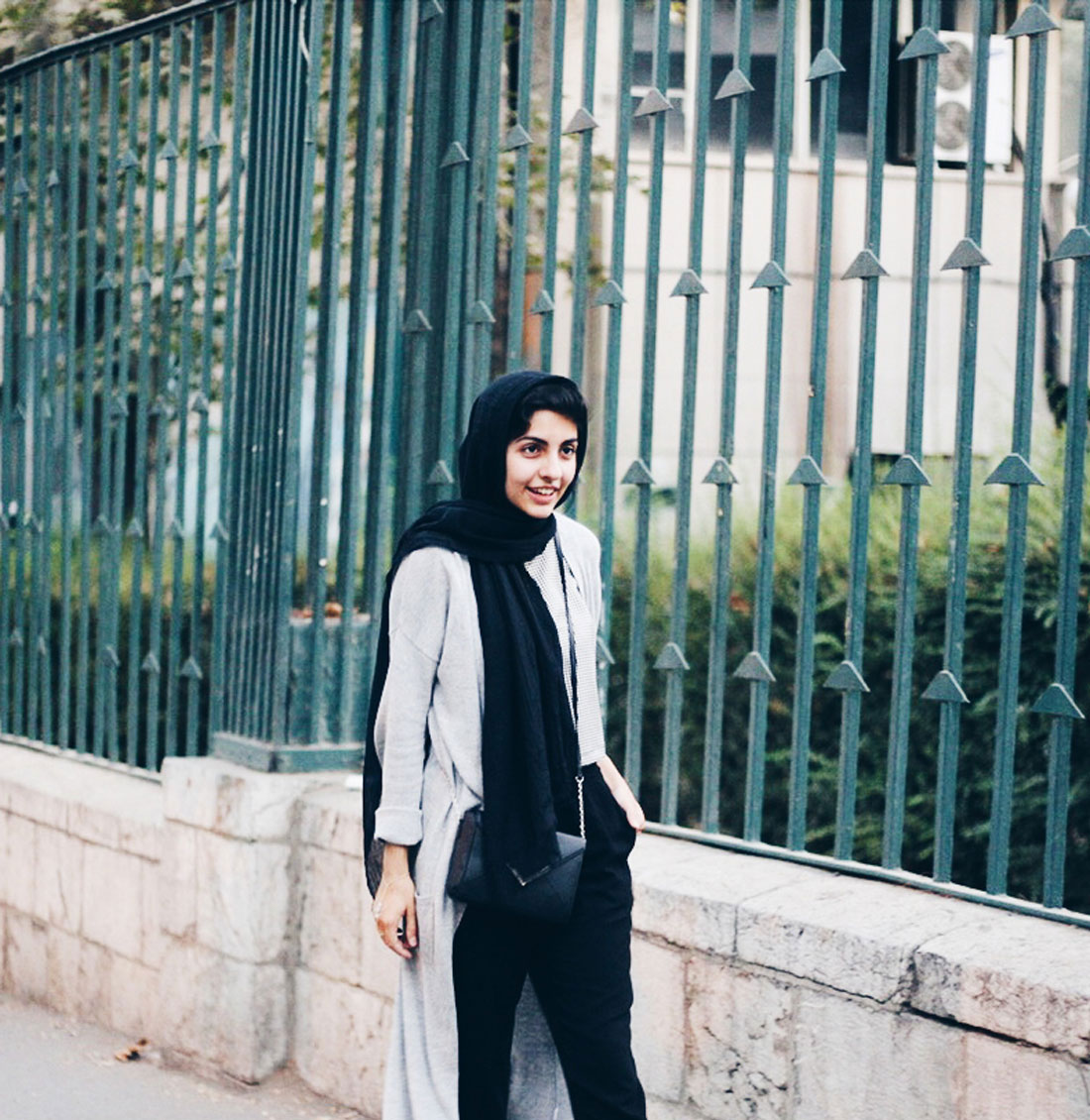By Alexandra Whittaker
Most college students worry about grades and college life, but 20-year-old University of Chicago student Hoda Katebi is focused on social activism. With her popular fashion blog JooJoo Azad (“Free Bird” in Farsi) Katebi has worked since the blog’s launch in 2013 to change the media’s portrayal of Middle-Eastern, hijab-wearing Muslim women like her.
Katebi just published a book called Tehran Streetstyle, the first in-print collection of modern fashion photography from the streets of Tehran, Iran. Medill Reports reporter Alexandra Whittaker caught up with Katebi to talk about feminism and her conviction that most art is inherently political.
Alexandra Whittaker (AW): What is the perception of hijab-wearing Muslims in the fashion industry?
Hoda Katebi (HK): I think there’s great work that needs to be done with normalizing the hijab in the fashion industry. But at the same time, something that plays out across the board is that people forget the people who make the clothing. Being part of this industry, it’s important for me to be aware of this and actively fight against it, or else you’re supporting it. So I think that’s where my blog is coming from.
AW: In light of this, what do you think of Dolce & Gabbana’s line of hijabs? Reviews have been very split. Some people call it capitalistic and cruel, and others praise it for being inclusive.
HK: I’m actually giving a talk at the Chicago Humanities Festival about this on April 30. I have mixed feelings about the Dolce and Gabbana collection. They are saying, ‘This is a line for Muslim women,’ but at the same time, as far as I know, none of the models were actually Muslim. All of them were white. The majority of Muslims aren’t white. All of [the ads] were still focused on beauty.
Of course, people wear the hijab for different reasons. But overwhelmingly a lot of Muslim women wear it to reject this excess consumerism and capitalism and standards of beauty. I feel like if they knew something about hijab, they would have never put this line out there. Spending thousands of dollars for a headscarf, in my opinion, goes against the reasons I wear the hijab.
AW: Was this your intention when you started your blog?
HK: I was boycotting all these brands before I started this blog. But I think the biggest thing that made me do it occurred two months before I started. A pregnant Muslim woman in France was subject to a hate attack. When she started yelling ‘I’m pregnant, I’m pregnant,’ they kicked her in the stomach and she had a miscarriage. I don’t know why, out of all the hate that I’ve personally experienced or seen or heard, this one particularly stuck with me. But then I realized that Muslim women are really attacked by feminists and attacked by the patriarchy, and attacked by every single thing.
I wanted to create a space where I could take back my representation as a Muslim woman. I decided to use fashion as a way of getting people more interested in reading it. A lot of people in the fashion industry also are very problematic, so I wanted to combine the two, and that’s how this was born.
AW: Do you think that fashion, as an art form, is inherently political?
HK: I feel that most, if not all, art is political. Right now there is a lot of sh*t that’s happening in the world. If you are not calling it out, then you’re silent, and silence is complicit. I think that, base line, art is political.
Everything that minorities do is always political, it seems. But then white people have the privilege of saying, ‘Oh I don’t want to be political.’ That’s a privilege, you know? Everything that I do has to be political because I’m always fighting in order to get free, in order to be liberated. Why is it that I can’t create something that isn’t political? It’s because I don’t have the privilege of doing that.
AW: Shifting gears here, you have a book that just came out! What inspired “Tehran Streetstyle”?
HK: The book is the first-ever collection of modern fashion photograph from the streets of Tehran in print. When I was interviewing underground fashion designers and people in Iran, I asked them if there was anything I could do to help them. They said, ‘We see in the West, you all see us as terrorists. We know the way Western people look at us, so we kind of want to create something that counters that.’
I want to take back my identity as a young Muslim Iranian woman from the media and present this counter narrative. Taking that back and challenging orientalism and patriarchal understandings of Islam and women, and presenting what a lot of these people actually wear.
So, I’m using this to present an inspirational alternative guide to dressing in the West that’s more modest and covered, but still very very beautiful. You can wear long clothing and you can wear loose clothing and you can still look hella fabulous.


